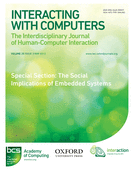
INTERACTING WITH COMPUTERS
Scope & Guideline
Advancing Insights in Human-Computer Interaction
Introduction
Aims and Scopes
- Human-Computer Interaction (HCI) Research:
Focus on studying the interactions between users and computers, including usability, user experience, and the design of interactive systems. - User-Centered Design:
Emphasis on designing technologies that prioritize the needs, preferences, and behaviors of users, ensuring that systems are accessible and intuitive. - Socio-Technical Perspectives:
Investigating the interplay between technology and social contexts, particularly how digital systems impact societal norms and individual behaviors. - Emerging Technologies and Applications:
Exploration of novel computing technologies, such as AI, VR, and AR, and their implications for user interaction and experience. - Behavioral and Psychological Factors:
Analysis of how psychological principles, such as motivation and engagement, influence user interactions with technology. - Participatory and Collaborative Design:
Encouraging involvement from diverse stakeholders in the design process to create more inclusive and effective technological solutions.
Trending and Emerging
- Digital Health and Well-Being:
An increasing number of studies are examining how digital technologies can support mental health and well-being, particularly in the context of remote interactions and interventions. - AI and Conversational Agents:
There is a growing focus on the design and impact of AI-driven conversational agents, exploring their roles in various contexts, including politics, health, and education. - Youth Engagement and E-Participation:
Research on youth involvement in digital platforms and political decision-making is gaining traction, emphasizing the importance of meaningful participation in a digital age. - Virtual and Augmented Reality Applications:
The use of VR and AR for educational and therapeutic purposes is a burgeoning area of interest, indicating a shift towards immersive experiences in user interaction. - Ethics and Social Implications of Technology:
A rising trend in examining the ethical implications of digital technologies and their societal impacts, highlighting the need for responsible design practices and considerations. - Collaborative and Remote Work Solutions:
Research addressing the challenges and solutions for collaborative work in digital environments, particularly in light of the ongoing changes brought about by the COVID-19 pandemic.
Declining or Waning
- Traditional Usability Testing:
There has been a noticeable decline in research specifically focused on traditional usability testing methods, as newer, more dynamic approaches to user experience evaluation gain prominence. - Static Interface Design:
Static designs that do not account for user interaction dynamics are becoming less relevant, as there is a growing emphasis on adaptive and responsive systems. - Single-Discipline Studies:
Research that focuses solely on technical aspects of HCI without considering social or cultural implications is waning, as interdisciplinary approaches become vital. - Focus on Physical Interfaces:
Interest in physical interfaces and tangible interaction seems to have decreased, with more attention being directed towards digital and virtual interactions.
Similar Journals

Multimodal Technologies and Interaction
Advancing Interdisciplinary Dialogue in Technology.Multimodal Technologies and Interaction, published by MDPI since 2017, is an esteemed open-access journal based in Switzerland, dedicated to the exploration and advancement of innovative multimodal systems that enhance user experience across various digital platforms. With its commitment to disseminating high-quality research in diverse areas such as Computer Networks and Communications, Human-Computer Interaction, and Neuroscience, the journal has rapidly established itself within the academic community, achieving a commendable position in Scopus rankings including Q2 in both Computer Networks and Communications and Computer Science Applications. As an essential resource for researchers, professionals, and students alike, Multimodal Technologies and Interaction fosters interdisciplinary dialogue and supports the development of cutting-edge technologies, ensuring that advancements in multimodal interaction are accessible to a global audience. Scholars can benefit from its Open Access format, allowing unrestricted access to influential studies that shape the future of technology and interaction design.

Computer Supported Cooperative Work-The Journal of Collaborative Computing and Work Practices
Exploring the future of teamwork through technology.Computer Supported Cooperative Work - The Journal of Collaborative Computing and Work Practices, published by SPRINGER, stands as a leading platform for research in the field of collaborative computing, providing essential insights into work practices that enhance group efforts in diverse environments. With an impressive impact factor and high-ranking position in the Q1 category of Computer Science, this journal not only showcases cutting-edge research but also fosters interdisciplinary dialogue among scholars, practitioners, and educators. Operating under the ISSN 0925-9724 and E-ISSN 1573-7551, this esteemed journal encapsulates research converged from 1992 to 2024, revealing an extensive history of contributions to the development and understanding of cooperative work systems. Catering to a global audience, the journal emphasizes the importance of collaboration in technology-mediated contexts, making it an invaluable resource for anyone seeking to explore the innovative intersection of technology and teamwork.

Journal of Organizational and End User Computing
Innovating Insights into User-Centric Computing PracticesThe Journal of Organizational and End User Computing, published by IGI Global, is a leading peer-reviewed outlet dedicated to exploring the intersection of organizational practices and user interfaces within the digital realm. With a robust ISSN of 1546-2234 and an E-ISSN of 1546-5012, the journal has established itself as a crucial resource for scholars and practitioners in the fields of Computer Science Applications, Human-Computer Interaction, and Strategy and Management. Recognized for its quality, the journal attained Q3 status in Computer Science Applications and Human-Computer Interaction, and Q2 status in Strategy and Management in 2023, reflecting its esteemed position in academic rankings. Operating from the heart of the United States, the journal has converged its focus from 2004 to 2024, making it a reliable source for cutting-edge research and industry trends. Although it does not offer open access, the Journal of Organizational and End User Computing remains an invaluable repository of knowledge, perfect for researchers, professionals, and students seeking to advance their understanding of organizational structures and user engagement in computing environments.
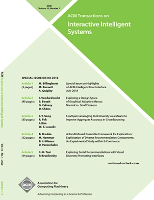
ACM Transactions on Interactive Intelligent Systems
Fostering Interdisciplinary Innovations in Intelligent Systems.ACM Transactions on Interactive Intelligent Systems is a distinguished journal published by the Association for Computing Machinery (ACM), specializing in the realms of Artificial Intelligence and Human-Computer Interaction. With an impactful presence in the academic community, it boasts a respectable Q2 quartile ranking in both fields as of 2023, highlighting its significant contributions to advancing interactive intelligent systems. The journal, identified by ISSN 2160-6455 and E-ISSN 2160-6463, encompasses a broad spectrum of research from theoretical advancements to practical implementations, offering invaluable insights for researchers, professionals, and students. The journal not only serves as a platform for innovative ideas and methodologies but also emphasizes the importance of interdisciplinary approaches in its publications. Positioned in the United States, at 1601 Broadway, 10th Floor, NEW YORK, NY 10019-7434, it stands out for its commitment to quality, rigor, and relevance within the computing and interactive systems sectors.
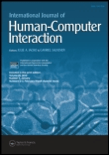
INTERNATIONAL JOURNAL OF HUMAN-COMPUTER INTERACTION
Advancing the Future of InteractionINTERNATIONAL JOURNAL OF HUMAN-COMPUTER INTERACTION, published by Taylor & Francis Inc, stands at the forefront of research within the interdisciplinary fields of human-computer interaction, human factors, and ergonomics. Since its establishment, the journal has consistently contributed to advancing the understanding of the interactions between people and computers, making it a vital resource for researchers, professionals, and students alike. With an impressive impact factor reflecting its high citation rate, this journal is recognized as a Q1 publication in both Computer Science Applications and Human Factors and Ergonomics categories for 2023, showcasing its stature within the academic community. Additionally, it boasts a commendable ranking within the top percentiles in key areas on Scopus, ensuring that the research published here reaches broad scholarly audiences. Available in traditional subscription format, the journal covers seminal studies from 1989 to 2024, reflecting ongoing innovation in technology and its applications in everyday life, and thus serves as an essential platform for pioneering research that shapes the future of user experience.

Proceedings of the ACM on Interactive Mobile Wearable and Ubiquitous Technologies-IMWUT
Advancing Wearable Innovations for a Connected WorldProceedings of the ACM on Interactive Mobile Wearable and Ubiquitous Technologies (IMWUT) is a premier journal published by the Association for Computing Machinery (ACM), dedicated to the rapidly evolving fields of interactive mobile technologies, wearable devices, and ubiquitous computing. Since its inception in 2017, IMWUT has established itself as a vital resource for researchers and practitioners, earning a prestigious Q1 ranking across multiple categories, including Computer Networks and Communications, Hardware and Architecture, and Human-Computer Interaction, as evidenced by its impressive Scopus metrics. With its open-access model and a focus on cutting-edge research, IMWUT aims to disseminate innovative solutions and technological advancements that enhance user experiences across diverse environments. Researchers, industry professionals, and students are encouraged to explore this journal to stay at the forefront of research and developments in interactive technologies.
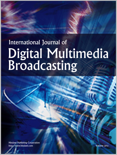
International Journal of Digital Multimedia Broadcasting
Unlocking Insights in Communication and EngineeringThe International Journal of Digital Multimedia Broadcasting is a leading scholarly platform dedicated to the interdisciplinary exploration of digital multimedia broadcasting, published by HINDAWI LTD. With an ISSN of 1687-7578 and an E-ISSN of 1687-7586, this Open Access journal has made significant strides since its inception in 2008, ensuring wide accessibility and dissemination of research. Based in the United States, at Adam House, 3rd Flr, 1 Fitzroy Sq, London W1T 5HF, England, the journal covers a range of topics relevant to Communication, Electrical and Electronic Engineering, and Media Technology, boasting impressive Scopus rankings that highlight its influence in these fields. As part of the Q3 category in Communication and Electrical Engineering, and Q2 in Media Technology for 2023, the journal serves a vital role in fostering the understanding of technological advancements and their applications in multimedia broadcasting. Researchers, professionals, and students are encouraged to contribute to and benefit from the journal's rich repository of knowledge, paving the way for innovative developments in this dynamic industry.
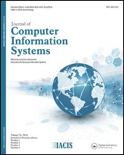
JOURNAL OF COMPUTER INFORMATION SYSTEMS
Exploring the Future of Computer Science and EducationThe JOURNAL OF COMPUTER INFORMATION SYSTEMS, published by Taylor & Francis Inc, is a prestigious academic journal dedicated to the fields of computer science and information systems. With an ISSN of 0887-4417 and an E-ISSN of 2380-2057, this journal has been a valuable resource since its inception in 1995, contributing to the convergence of research until 2024. The journal holds significant status in its respective categories, achieving a Q2 ranking in Computer Networks and Communications, and a Q1 ranking in Education, demonstrating its impact and relevance to a broad academic audience. With Scopus rankings placing it in the 90th percentile for Social Sciences - Education and respectable standings in Computer Science, it serves as a critical forum for the dissemination of innovative research, methodologies, and case studies within the domains of computer information systems. Although not an open-access journal, it remains a highly cited source, attracting researchers, educators, and professionals seeking to enhance their knowledge and contribute to the evolving discourse in technology and education.

DIGITAL CREATIVITY
Innovating the Future of Creative Practices and Digital AestheticsDIGITAL CREATIVITY, published by Routledge Journals, Taylor & Francis Ltd, is a distinguished academic journal that serves as a vital platform for interdisciplinary research across the realms of Arts and Humanities, Computational Theory and Mathematics, Computer Graphics, and Human-Computer Interaction. Since its inception in 2005, this journal has aimed to explore the intersection of digital technologies and creative practices, making significant contributions to our understanding of digital aesthetics, interactive design, and the evolving nature of creativity in the digital age. With an impressive Q1 ranking in Arts and Humanities and notable standings in related computational fields, DIGITAL CREATIVITY appeals to a diverse audience of researchers, professionals, and students eager to engage with pioneering studies and innovative methodologies. While it presents valuable content primarily through subscription access, its credence in driving forward-thinking discussions is underscored by its ongoing relevance and commitment to advancing knowledge in a rapidly changing digital landscape. Join the conversation and contribute to shaping the future of digital creativity.

Journal on Multimodal User Interfaces
Connecting Minds in Human-Computer InteractionJournal on Multimodal User Interfaces, published by Springer, serves as a vital platform for scholarly exchange in the rapidly evolving fields of Human-Computer Interaction and Signal Processing. Established in 2008 and continuing through 2024, this journal maintains a high profile in academia, currently ranking in the Q2 category for both fields, indicating its significant contribution to ongoing research and practical applications. With its Scopus rankings placing it at #34 in Signal Processing and #49 in Human-Computer Interaction, it is recognized for publishing high-quality, impactful research. Although it is not an Open Access journal, the Journal on Multimodal User Interfaces remains accessible through institutional subscriptions. Researchers, professionals, and students will find the journal an essential resource for advancing knowledge and fostering collaboration in multimodal interaction technologies, which are crucial for enhancing user experience and developing intelligent systems.